中国天问一号着陆巡视器成功着陆于火星
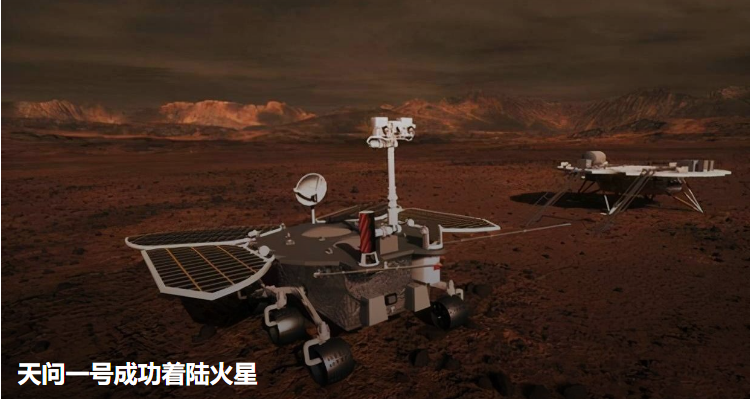
5月15日,天问一号火星探测器所携带的祝融号火星车及其着陆组合体成功着陆于火星。我国首次火星探测任务着陆火星取得圆满成功。
On May 15, the Mars rover zhurong and its landing assembly carried by tianwen-1 Mars probe successfully landed on Mars. China's first Mars exploration mission landed on Mars with complete success.

记者从国家航天局获悉,科研团队根据“祝融号”火星车发回遥测信号确认,5月15日,天问一号着陆巡视器成功着陆于火星乌托邦平原南部预选着陆区,我国首次火星探测任务着陆火星取得圆满成功。
The reporter learned from the National Space Administration that according to the telemetry signal sent back by the "zhurong" Mars rover, the scientific research team confirmed that on May 15, tianwen-1 lander successfully landed in the pre selected landing area in the south of the Martian Utopian plain, and China's first Mars exploration mission landed on Mars successfully.
凌晨1时许,天问一号探测器在停泊轨道实施降轨,机动至火星进入轨道。4时许,着陆巡视器与环绕器分离,历经约3小时飞行后,进入火星大气,经过约9分钟的减速、悬停避障和缓冲,成功软着陆于预选着陆区。两器分离约30分钟后,环绕器进行升轨,返回停泊轨道,为着陆巡视器提供中继通信。后续,“祝融号”火星车将依次开展对着陆点全局成像、自检、驶离着陆平台并开展巡视探测。
At about 1:00 a.m., the tianwen-1 probe was in the docking orbit to lower its orbit and moved to Mars to enter the orbit. At about 4:00, the lander separated from the orbiter. After flying for about 3 hours, it entered the Martian atmosphere. After about 9 minutes of deceleration, hovering, obstacle avoidance and buffering, it successfully landed in the pre selected landing area. About 30 minutes after the separation, the orbiter ascends and returns to the parking orbit to provide relay communication for the landing Rover. In the future, the "zhurong" Mars rover will successively carry out global imaging of landing points, self inspection, leave the landing platform and carry out patrol exploration.
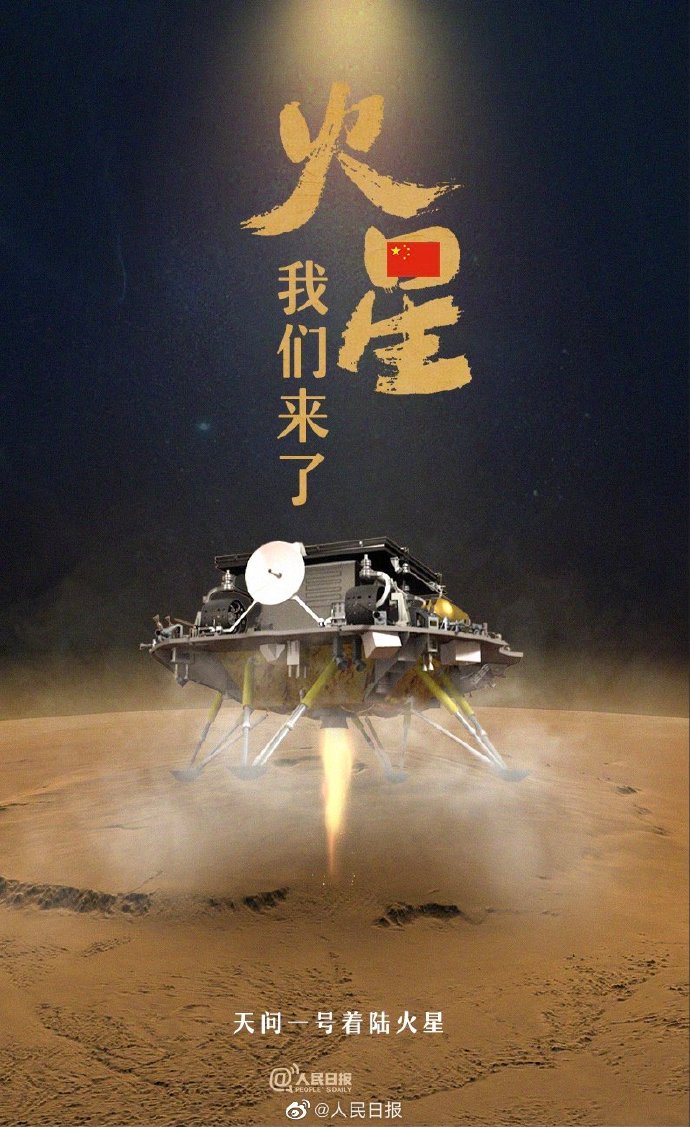
我国首次火星探测任务于2016年正式批复立项,计划通过一次任务实现火星环绕、着陆和巡视,对火星进行全球性、综合性的环绕探测,在火星表面开展区域巡视探测。天问一号探测器由环绕器和着陆巡视器组成,着陆巡视器包括“祝融号”火星车及进入舱。探测器自2020年7月23日成功发射以来,在地火转移阶段完成了1次深空机动和4次中途修正,于2月10日,成功实施火星捕获,进入大椭圆环火轨道,成为我国第一颗人造火星卫星。2021年2月24日,天问一号探测器成功实施第三次近火制动,进入周期2个火星日的火星停泊轨道后,对火星开展全球遥感探测,并对预选着陆区进行详查,探测分析地形地貌、沙尘天气等,为着陆火星做准备。任务实施过程中,中国国家航天局与欧空局、阿根廷、法国、奥地利等国际航天组织和国家航天机构开展了有关项目合作。目前,探测器已在太空运行295天,距离地球约3.2亿千米。
China's first Mars exploration mission was officially approved in 2016. It is planned to realize Mars circling, landing and inspection through one mission, carry out global and comprehensive circling exploration on Mars, and carry out regional inspection and Exploration on the surface of Mars. The tianwen-1 spacecraft consists of a orbiter and a landing rover, which includes the "zhurong" Mars rover and the entry module. Since its successful launch on July 23, 2020, the probe has completed one deep space maneuver and four midway corrections in the ground fire transfer phase. On February 10, it successfully implemented Mars capture and entered the large elliptical annular fire orbit, becoming China's first man-made Mars satellite. On February 24, 2021, tianwen-1 successfully implemented the third near fire brake. After entering the Mars docking orbit with a cycle of two Mars days, it carried out global remote sensing exploration on Mars, and carried out detailed investigation on the pre selected landing area, explored and analyzed the topography, sand and dust weather, so as to prepare for landing on Mars. During the implementation of the mission, China's National Space Administration has carried out relevant project cooperation with ESA, Argentina, France, Austria and other international space organizations and national space agencies. At present, the probe has been in space for 295 days, about 320 million kilometers away from the earth.
火星探测风险高、难度大,探测任务面临行星际空间环境、火星稀薄大气、火面地形地貌等挑战,同时受远距离、长时延的影响,着陆阶段存在环境不确定、着陆程序复杂、地面无法干预等难点。天问一号任务突破了第二宇宙速度发射、行星际飞行及测控通信、地外行星软着陆等关键技术,实现了我国首次地外行星着陆,是中国航天事业发展中又一具有重大意义的里程碑。
Mars exploration is high-risk and difficult. The exploration mission is faced with the challenges of interplanetary space environment, Mars thin atmosphere, fire surface topography and so on. At the same time, due to the influence of long distance and long time delay, there are some difficulties in landing phase, such as uncertain environment, complex landing procedure, and no ground intervention. Tianwen-1 mission has broken through the key technologies of the second cosmic speed launch, interplanetary flight, TT & C communication, and soft landing of extraterrestrial planets, and achieved the first extraterrestrial planet landing in China, which is another milestone of great significance in the development of China's space industry.
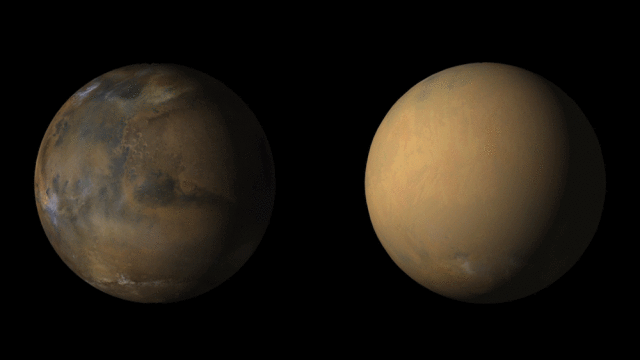



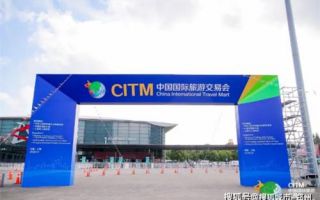
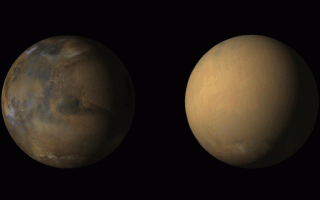
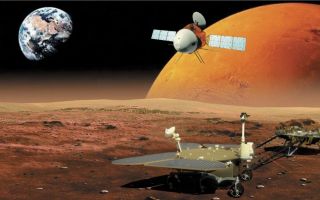
0 条 评 论 Write a Response